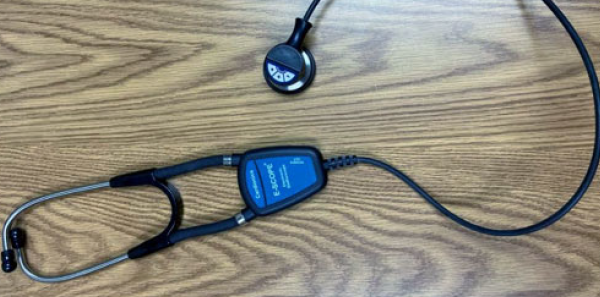
Three years ago I noticed I was not hearing well through my stethoscope. I decided to try an in-line analog amplifier that would work with my standard stethoscope. I was pleased with the result.
Explore This Issue
ACEP Now: Vol 39 – No 08 – August 2020Unfortunately, over time my hearing continued to deteriorate. I often asked patients and nurses to repeat themselves or speak loudly. I could hear people speak but not understand the words. People speaking behind me thought I was ignoring them. I needed to turn up the volume on the radio and TV, and I found hearing my cell phone challenging.
I made an appointment with an audiologist, and she performed an audiogram. The audiogram showed high-end hearing loss, and she recommended hearing aids. We talked about my work environment and stethoscope use and made a plan. I now wear behind-the-ear hearing aids with a fenestrated dome, which allows me to continue using my same amplified stethoscope. My hearing is greatly improved, and I rarely ask people to repeat themselves.
This approach worked for me, but everyone is different. Below, I discuss the various considerations and options in stethoscopes and hearing aids.
Keep in Mind
When thinking about stethoscope solutions, we first must understand that many heart, lung, and bowel sounds are low-frequency signals, and many current hearing aids don’t provide amplification of those frequencies. Therefore, it may not help you to send the stethoscope signal through certain hearing aids.
The good news: Most individuals with hearing loss retain hearing in the low frequencies. Those individuals can use open-fit hearing aids, which leave the ear canal largely open allowing low-frequency sounds to come in naturally. With such hearing aids, you can route the stethoscope signal past them.
Keep in mind that when an individual with normal hearing uses a stethoscope, their ears are blocked and their listening is focused on the stethoscope’s sounds. In contrast, when using a stethoscope with hearing aids, the hearing aid microphone remains on while you listen to the stethoscope. This may prove distracting because the sounds in the room will continue to be amplified through the hearing aids. If it is distracting, the audiologist can create a hearing aid program in which the microphones can be turned off at the hearing aid or remotely prior to using the stethoscope.
Last but not least, remember that if you do or will wear hearing aids, the goal is always to leave them in place. Removing and replacing hearing aids with each use of the stethoscope is not realistic.
Pages: 1 2 3 4 5 | Single Page





One Response to “Stethoscopes & Hearing Aids: Choosing the Right Devices for You”
June 28, 2021
rahul kumarWhere I can buy a amplified stethoscope..